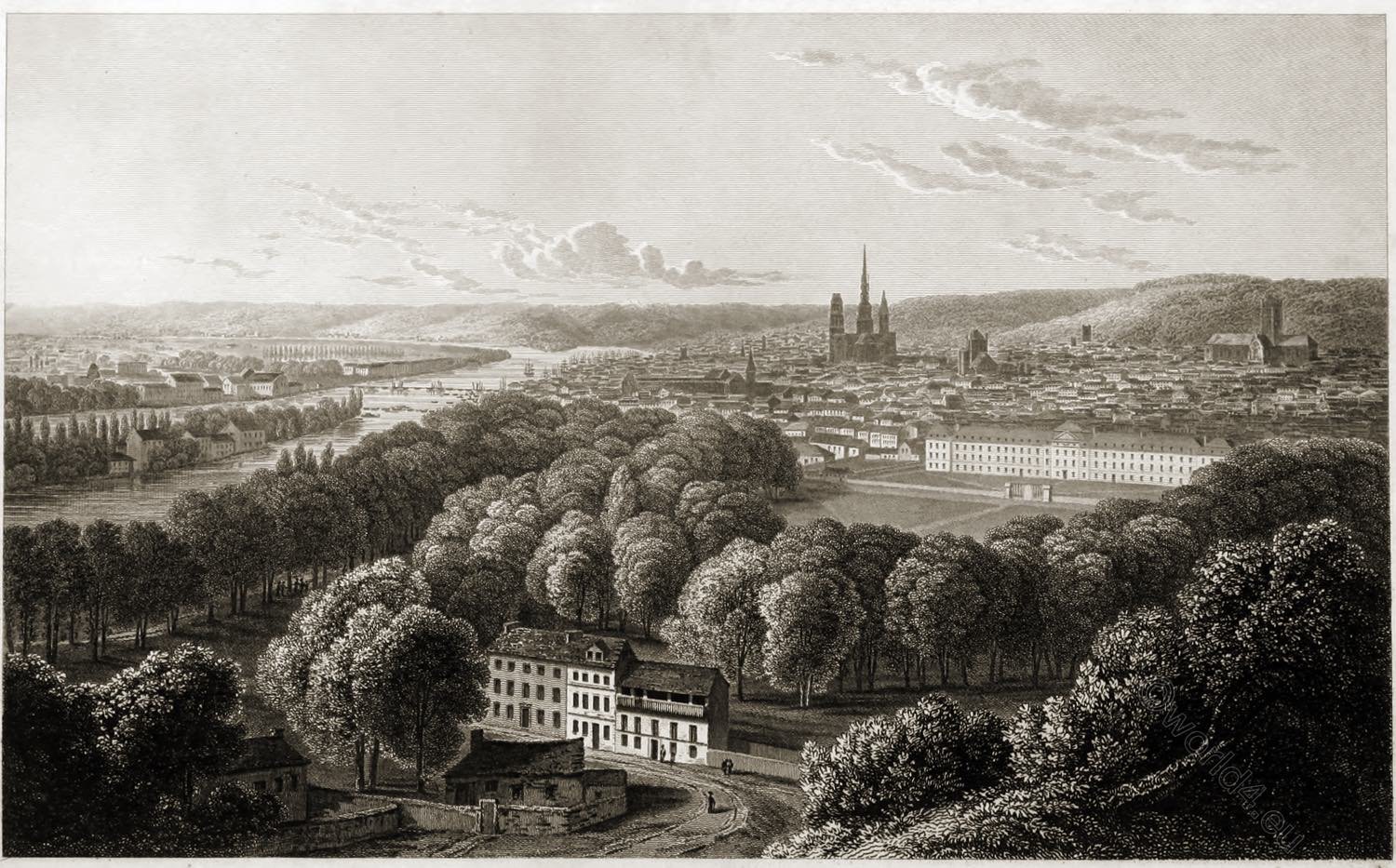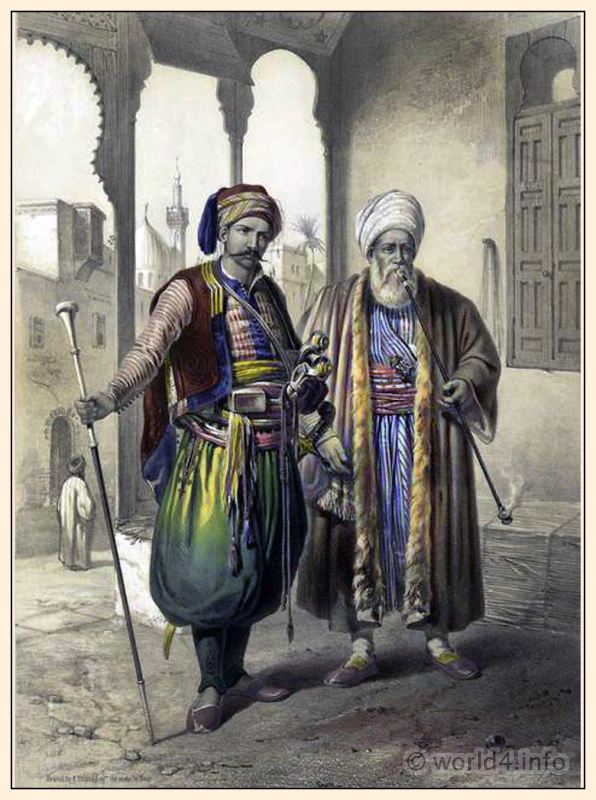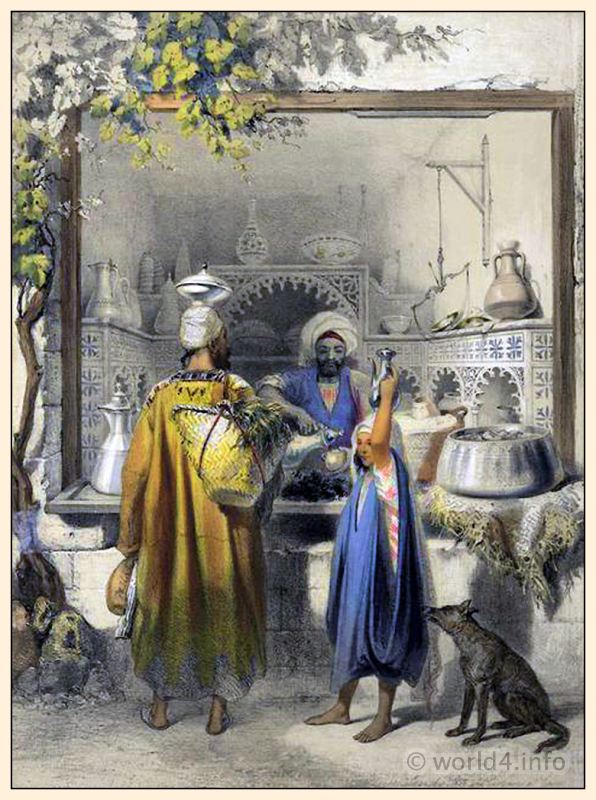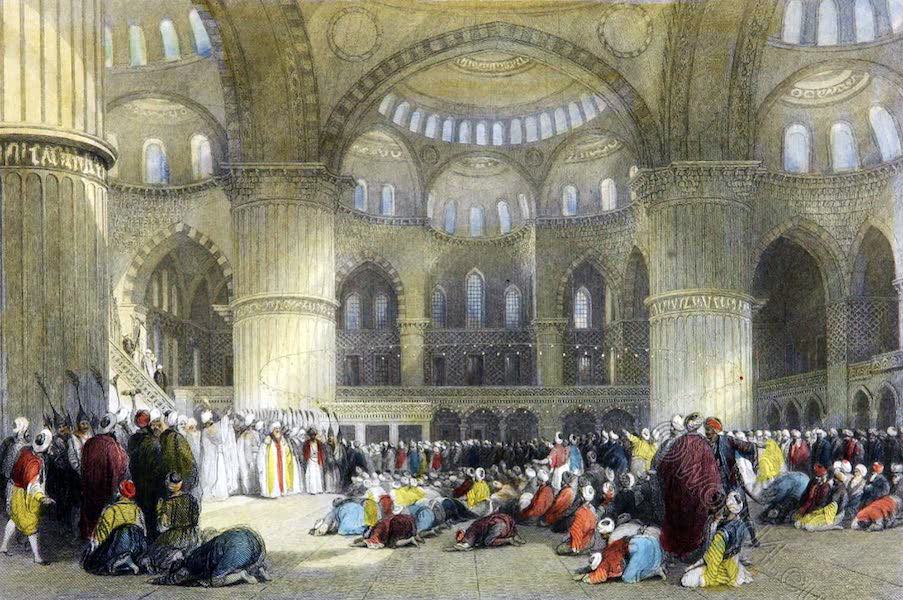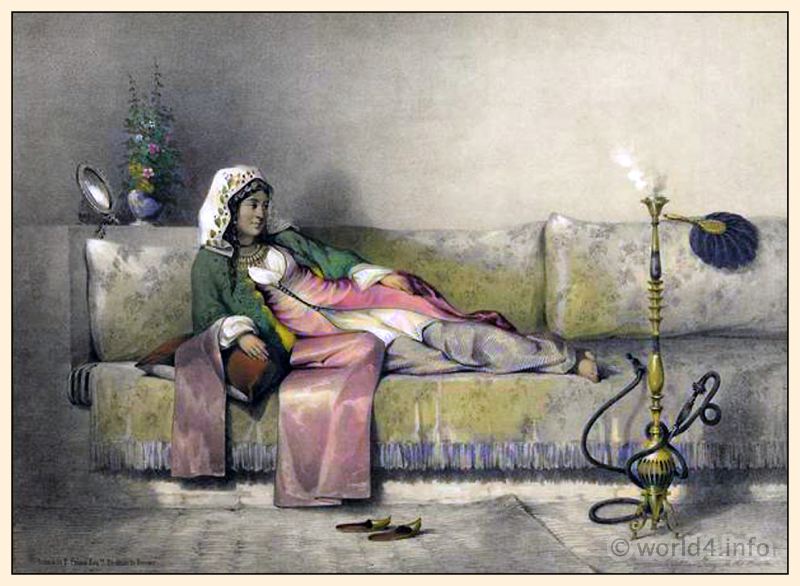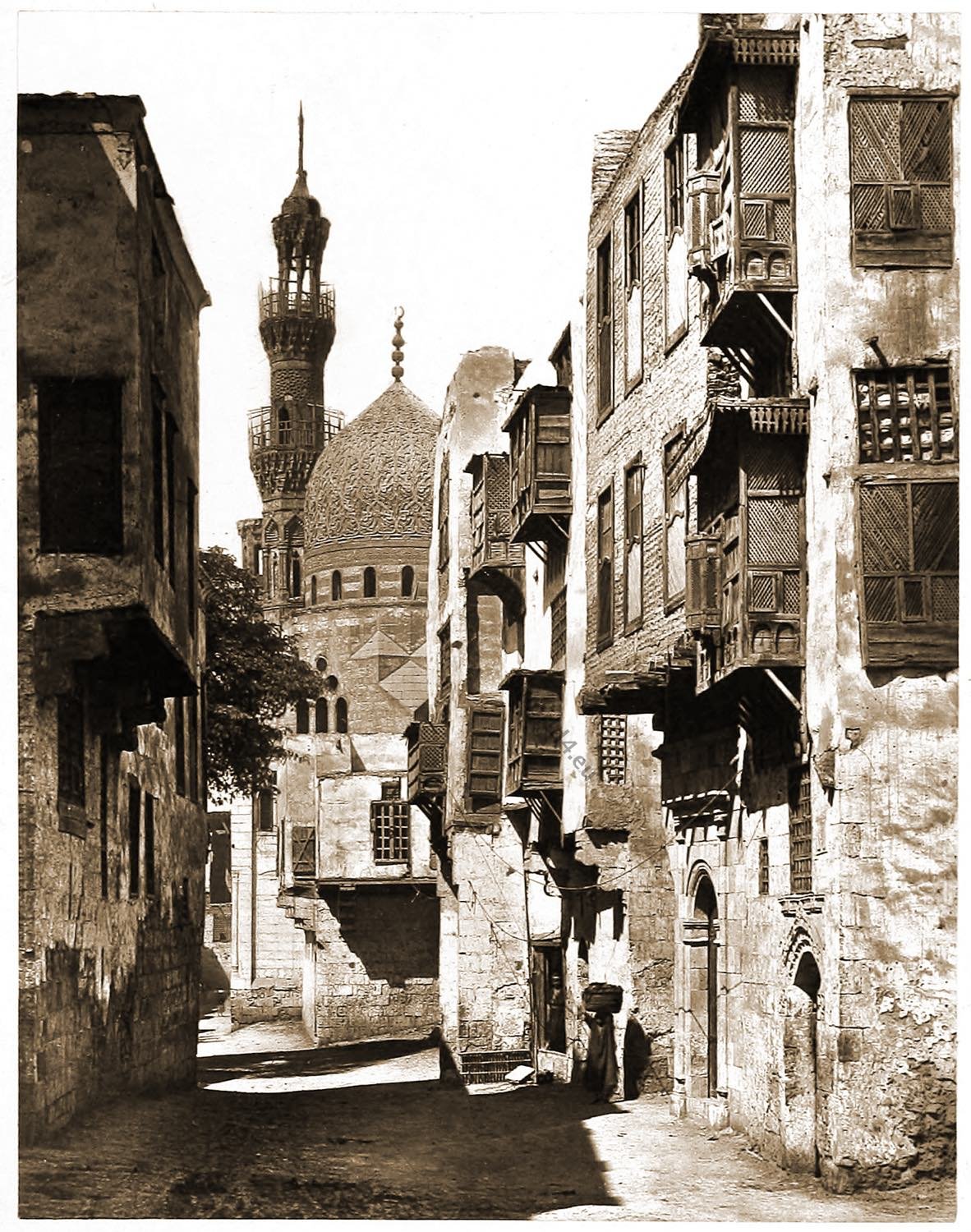
STREET IN CAIRO.
CAIRO, Kahira, or more properly by its full Arabic designation El Ckáhireh, is situated in a plain near the apex of the Nile Delta, and forms the capital of modern Egypt.
It occupies about three square miles, and its mixed population of Mussulman’s, Copts, Jews, and Europeans are enclosed within a wall whose gates are shut at night, whilst a large citadel, situated on a spur of the ridge of Mokattam *), commands the city, and serves as a residence for the Pacha.
*) The Muqattam (Arabic المقطّم, DMG al-Muqaṭṭam) is a stone plateau in the southeast of the Egyptian capital Cairo, stretching from the Cairo Citadel in the north to Helwan in the south. High-quality limestone has been quarried in the quarries near Tura since the Old Kingdom. At its foot are the districts of Manschiyyet Nasser (the so-called “Garbage City”) and the Qarafa, the so-called “City of the Dead”. On Mokattam Hill lie the oldest preserved domed tombs (qubbas) from Fatimid times.
The whole aspect of Cairo is thoroughly Oriental. The streets are narrow and unpaved, more like our ideas of lanes than the streets of a capital.
In the great thoroughfares there is a row of shops on both sides, and above the shops are suites of apartments, which do not communicate with them, but are inhabited by private families. The by-streets have gates, which, like the gates of the city, are closed at night, and guarded by a porter within, who opens them to persons requiring admittance.
Sometimes one may find a cluster of streets, and courts branching out of them to right and left, which have but one common entrance, guarded in this manner.
Most of the better class of houses are cased to the height of the first floor with stone from the neighboring mountain, somewhat resembling Bath freestone in appearance, whilst the upper part of the building is of dark red bricks, which, however, are often plastered.
The ground-floor rooms, next to the street, have small wooden grated windows; but the windows of the upper apartments are mostly formed of wooden lattice work, which, as represented in the photograph before us, shuts out much of the light and sun, but lets the air in freely. In some of the better houses, however, a frame of glass is used within these jalousies, which helps to exclude the piercing cold of the winter season.
The houses are built after the usual Oriental model, around a court upon which look the windows of the principal apartments, and in its centre there is generally a well of brackish water, which filters through the soil from the river Nile, whilst on its most shaded side two water-jars invariably stand, replenished from time to time from the skin bottles in which the water-carriers bring the river water into the city for drinking purposes.
Amongst the numerous mosques, four are especially noticeable for their size and architecture. That of Tooloon dates from the ninth century,— El Azhar, which we see before us in the photograph, is remarkable for its magnificent dome and for the college attached to it,— the mosque of Hhasaneyn, with its yet more lofty dome and two towering minarets, is resplendent with marble ornaments and gorgeous decoration,—whilst the fourth, El Hakim, is well worthy a passing visit.
Cairo is considered the best school of ‘Arabic literature; and for Mahommedan theology and jurisprudence the fame of its professors is unrivaled. Every mosque has a day-school attached to it, in which the children learn to read the Koran, and also writing and arithmetic in the higher forms, but the schoolmasters themselves are persons of very little learning, and the youth of Cairo probably do not enjoy such educational advantages as might be expected in the land which may fairly be considered the native home of the liberal sciences.
But the college attached to the mosque of El Azhar offers opportunities which those who are intended for the sacred or learned professions are not slow to accept, more especially as the instruction is given gratis, and the professors subsist by teaching in private houses, by copying books, and on the presents which they receive from the wealthy.
Here is a considerable library, and courses of lectures on logic, theology, grammar, rhetoric, exegesis of the Koran, the tradition of the prophets, and religious, moral, and criminal law employ the time of the youthful Mussulman’s, who congregate from all parts of the Mohammedan world.
Besides this university there is an elementary school of arts and sciences for the instruction of civil engineers.
Cairo is undoubtedly the first Arab city of our age, and there is no other place in which we can obtain such a complete knowledge of the most civilized class of Arabs. The men are finer and the women fairer and more beautiful than in any other part of Egypt, whilst the salubrious climate and clear, transparent air give a charm and richness to the ever-varying scenes and mingled reminiscences of this romantic city.
Descriptive Article by Francis C. Naish. Photographed by Good.
Source: Treasure spots of the world: a selection of the chief beauties and wonders of nature and art by Walter Bentley Woodbury (1834-1885); Francis Clement Naish. London: Ward, Lock, and Tyler, Paternoster Row, 1875.
Continuing
Discover more from World4 Costume Culture History
Subscribe to get the latest posts sent to your email.


